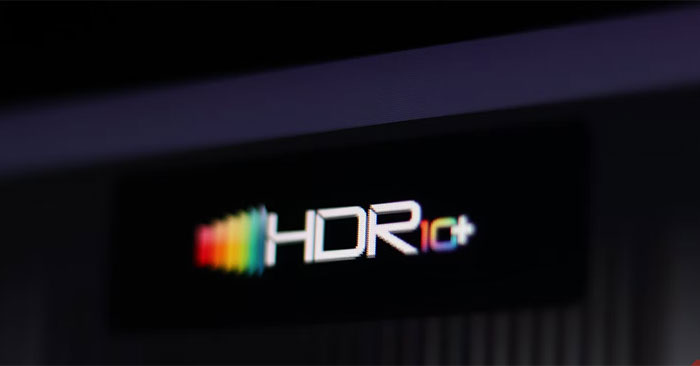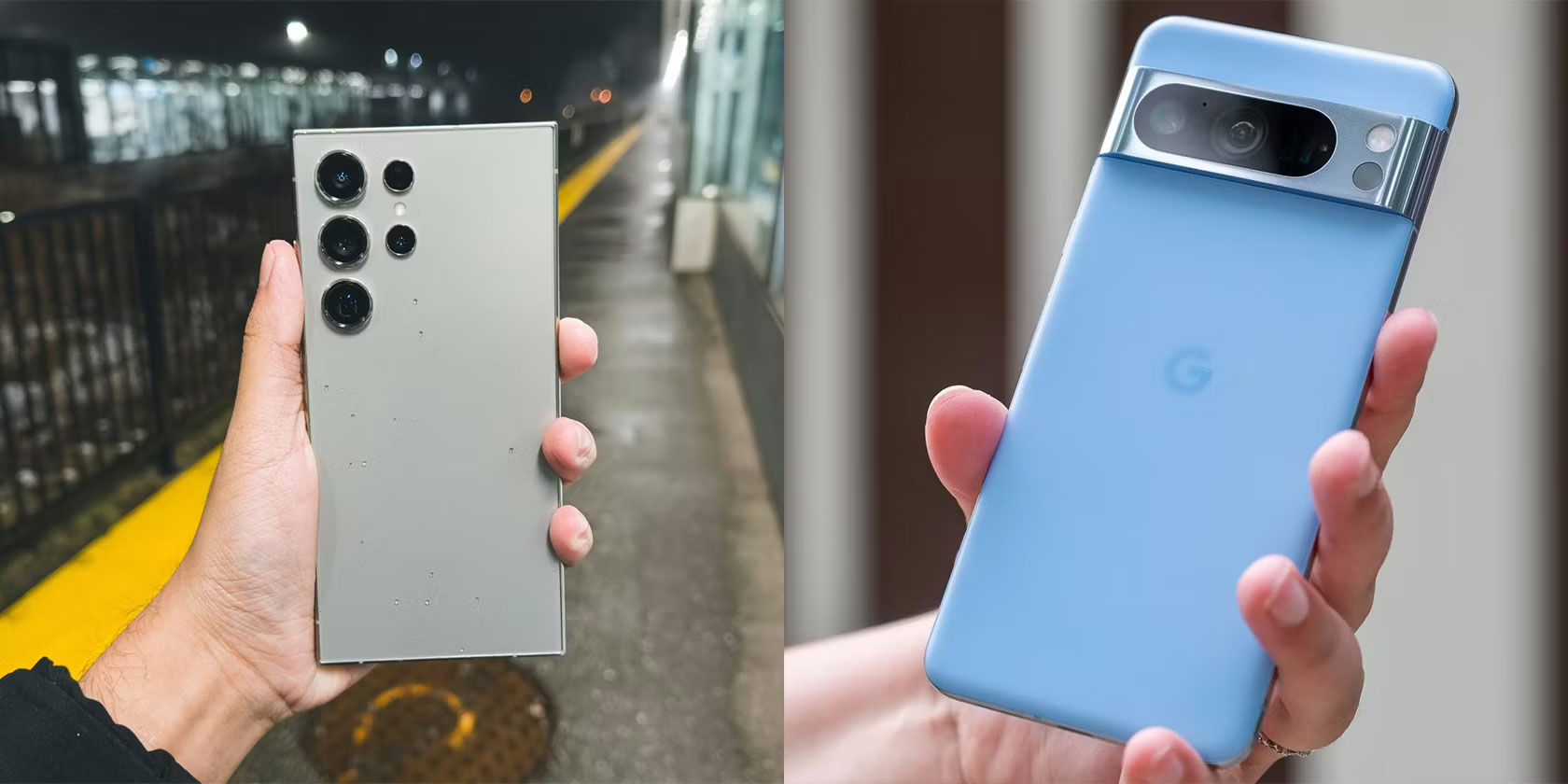What is HDR10+?
HDR10+ is one of the latest versions, building on the promise of HDR10 and aiming to deliver even better images. but what exactly does that mean?
What is HDR10+?
Developed in partnership with 20th Century Fox, Panasonic and Samsung, HDR10+ first launched in 2017. It builds on the same feature set as HDR10 but with two key improvements.
First, it increases the maximum brightness to 10,000 lumens. This means you get much better contrast because the display panel has more brightness to work with.
Samsung has gone a step further by implementing HDR10+ Adaptive technology on its TVs, allowing them to detect the brightness of the viewing space and make changes to the TV's brightness, contrast, and accordingly, for the best possible viewing experience regardless of the lighting around you.

Second, HDR10+ improves information processing by carrying "dynamic" metadata. Previously, HDR10 carried "static" metadata for content. This means there is only one set of values such as brightness, contrast, saturation, etc. for the entire content. So while this metadata may work for most movies, some scenes will appear too dark, too bright, or too saturated.
Dynamic metadata means that the format now carries metadata for each specific frame. It continuously changes display values as content plays, giving each frame its own color, brightness, and contrast values, among other things. This makes each frame look much more realistic and detailed, with accurate colors and lighting.
These changes combined ensure that you get the best possible color accuracy and dynamic range from your content. Other benefits of HDR10+ include support for 8K resolution and up to 16-bit signals, allowing for a staggering 280 trillion colors. The HDR10+ whitepaper is a great place to start if you want to learn the important technical details.
This also applies to the gaming industry, in addition to benefits such as no impact on game performance, better visuals (and therefore more immersion), and ease of implementation and optimization.
What do you need to get HDR10+?
Like any other HDR format, you need a few things to watch content that supports HDR10+:
- One source supports HDR10+. This can be anything from Blu-ray discs or streaming services like Amazon Prime Video, Apple TV+ or Hulu, and even games.
- A device capable of reading HDR10+ format. This could be your media streaming device, Blu-ray player, PC or smartphone.
- Display panels, TVs compatible with HDR10+ or others.
- One HDMI 2.1 cable.
While TVs are still the mainstay of HDR10+, the technology is starting to become more accessible on other devices, such as smartphones and laptops. Most flagship phones, including the Samsung S24 Ultra, Google Pixel 8/8Pro, and even the Xiaomi 13T Pro, support HDR10+. Currently, iPhone 15 Pro/Plus only supports HDR10.

Nvidia has also partnered with HDR10+ to support the format with its GeForce RTX line of graphics cards. However, on a PC, you'll need a compatible monitor from Alienware, Benq, Dell, and Lenovo. HDR10+ adoption is growing, so expect this list to grow. Currently, this format has been adopted by more than 150 people.
As for laptops, expect the flagship machines from the companies mentioned above to have compatible displays, but unless otherwise stated, you'll most likely end up with an HDR10 panel.
The HDR10+ website has a full list of certified products that you can check to make sure the device you're buying supports the format. However, finding a device in that list can be a tiring task since it's 972 pages of serial code, but at least it's an option.
Is HDR10+ better than Dolby Vision?
If you look at the spec sheet, Dolby Vision and HDR10+ are practically the same, except that Dolby Vision can only use 12-bit signals for up to more than 68 billion colors. Realistically speaking, you'll need superhuman eyes to spot the difference.

However, Dolby Vision is currently the more popular of the two formats (launched in 2014). It has received many updates since then, transforming it into the format it is today, and it has thus gained a large portion of the market in the process.
Thankfully, we're not embroiled in another format war here. Unlike previous conflicts in the video industry such as Blu-ray versus HD-DVD, HDR10+ and Dolby Vision are not mutually exclusive. This means display manufacturers can support both formats at the same time to provide maximum compatibility for users.
In general, it's quite easy to find a combination of HDR10 and Dolby Vision on many consumer TVs today, with HLG also included.
| Feature | HDR10+ | Dolby Vision |
|---|---|---|
| Maximum brightness | Up to 10,000 nits | Up to 10,000 nits |
| Color depth | Up to 16-bit (280 trillion colors) | Up to 12 bits (68.7 billion colors) |
| Resolution support | Up to 8K | Up to 8K |
| Dynamic metadata | Yes, per frame | Yes, per frame |
| Static metadata | Are not | Have |
| Backwards compatibility | HDR10, SDR | HDR10, HLG, SDR |
| Year of introduction | 2017 | 2014 |
However, although it is relatively easy to support different HDR formats, very few manufacturers actually do it. Therefore, you should check the product specifications and supported HDR formats before purchasing a new monitor, TV, etc.
HDR10+ sources work in a similar way. For example, streaming services like Amazon Prime Video or Apple TV can support both Dolby Vision and HDR10+. You can also find it on streaming devices from Amazon Fire TV, Roku, Apple TV, and even Google Chromecast. Even Unreal Engine natively supports both HDR10+ and Dolby Vision (along with Dolby Atmos), and there are many other ways you can find HDR content.
Regardless, just read the instructions carefully and you'll be able to set it up to greatly enhance your viewing experience. Since you don't necessarily have to choose between two formats, you also have a variety of sources and hardware to choose from.
You should read it
- How to change SDR and HDR light balance in Windows 10
- 5 mistakes everyone mistakenly thinks about WordPress
- 10 inventions change the world but their owners are almost empty
- Free messaging application without Internet
- 49 smart Photoshop tips you need to know (Part 3)
- Change the following 7 iOS settings to better Safari security
- Sony is about to launch the first TransferJet devices
- 10 issues when developing backup strategy on multi-platform systems
May be interested
- How to use GoChat application in Pokémon GO
 pokémon go has become a very hot phenomenon since its debut. any information or tricks related to the game are read and applied by players during the process of catching pokémon. and the gochat chat app for pokémon go players brings space to capture pokémon much more interesting.
pokémon go has become a very hot phenomenon since its debut. any information or tricks related to the game are read and applied by players during the process of catching pokémon. and the gochat chat app for pokémon go players brings space to capture pokémon much more interesting. - How to play Pokemon GO in Landscape Mode on the iPhone
 although players can play pokemon go in portrait mode. however, if you want to watch and play games on a large and eye-catching screen, players can switch to playing games in landscape mode.
although players can play pokemon go in portrait mode. however, if you want to watch and play games on a large and eye-catching screen, players can switch to playing games in landscape mode. - The secret to controlling Pokemon Go employees at work
 these days, hr managers are faced with an extremely painful problem that is the status of priority employees playing pokemon go more than work. this has caused a small impact on productivity and efficiency.
these days, hr managers are faced with an extremely painful problem that is the status of priority employees playing pokemon go more than work. this has caused a small impact on productivity and efficiency. - Check out the 'buffalo' Pokémon in Pokémon Go
 each type of pokemon has hp, cp, ability to attack and endure differently. based on these indicators, players can determine as well as choosing the most powerful pokemon for their offensive tactics.
each type of pokemon has hp, cp, ability to attack and endure differently. based on these indicators, players can determine as well as choosing the most powerful pokemon for their offensive tactics. - Sitting home can also locate Pokemon around, do you believe it?
 the tightening of the niantic developers' rules to prevent players from abusing the support tools also brings annoyance, such as those who have no conditions to move much, go away, it is hard to know. get the location of the pokemon around the area they live in
the tightening of the niantic developers' rules to prevent players from abusing the support tools also brings annoyance, such as those who have no conditions to move much, go away, it is hard to know. get the location of the pokemon around the area they live in - 5 undeniable benefits when playing Pokemon Go
 get to know many new people, breathe fresh air, relieve stress, increase concentration thanks to going out for a walk .... are compelling reasons to force you to try pokemon go now .
get to know many new people, breathe fresh air, relieve stress, increase concentration thanks to going out for a walk .... are compelling reasons to force you to try pokemon go now . - Want to earn the fastest Pokécoins in Pokémon Go? So don't miss this article!
 pokécoins in pokémon go play the role of buying items in the store. the more coins you earn, the more likely you are to buy more items. to earn pokécoins, players will have to complete certain tasks or buy real money.
pokécoins in pokémon go play the role of buying items in the store. the more coins you earn, the more likely you are to buy more items. to earn pokécoins, players will have to complete certain tasks or buy real money. - Pokémon systems when fighting in Pokémon Go
 each pokémon system in pokémon go has different strengths, along with a specific weakness. this type of pokémon will have the power to attack the other pokémon, but can defeat the other pokémon. if you know the characteristics of each type, it will be easier to choose which pokémon to battle.
each pokémon system in pokémon go has different strengths, along with a specific weakness. this type of pokémon will have the power to attack the other pokémon, but can defeat the other pokémon. if you know the characteristics of each type, it will be easier to choose which pokémon to battle. - The terms you need to know when playing Pokémon Go
 pokémon go is the most prominent name in recent days. this game of capturing and training virtual animals has created a relatively new way of playing, as players have to constantly move to catch pokémon. during the process of joining pokémon go, you will encounter and use a lot of important terms. so what do they mean?
pokémon go is the most prominent name in recent days. this game of capturing and training virtual animals has created a relatively new way of playing, as players have to constantly move to catch pokémon. during the process of joining pokémon go, you will encounter and use a lot of important terms. so what do they mean? - How to play Pokemon GO on Windows computers
 recently, pokemon go has become a popular game, attracting thousands of gamers around the world. in previous posts network administrator has guided you on how to play pokemon go on android devices and ios devices. in the article below, network administrator will guide you how to play pokemon go on windows computers using bluestacks emulator software.
recently, pokemon go has become a popular game, attracting thousands of gamers around the world. in previous posts network administrator has guided you on how to play pokemon go on android devices and ios devices. in the article below, network administrator will guide you how to play pokemon go on windows computers using bluestacks emulator software.










 4 easy ways to connect your new Soundbar to your TV
4 easy ways to connect your new Soundbar to your TV How to project Android screen on TV is extremely easy
How to project Android screen on TV is extremely easy Should I buy a QLED, OLED or LED TV?
Should I buy a QLED, OLED or LED TV? 5 best cheap TVs for gaming
5 best cheap TVs for gaming 3 ways to connect MacBook to TV
3 ways to connect MacBook to TV The 5 best QLED TVs of 2024
The 5 best QLED TVs of 2024